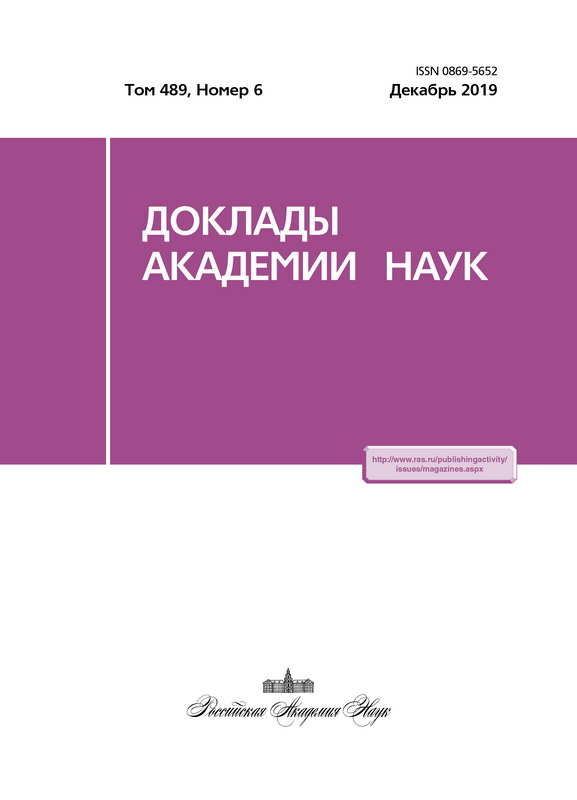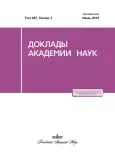Новые мишени пептида Кунитц-типа актинии Heteractis magnifica
- Авторы: Кветкина А.Н.1, Калужский Л.А.2, Лейченко Е.В.1,3, Исаева М.П.1, Иванов А.С.2, Козловская Э.П.1
-
Учреждения:
- Тихоокеанский институт биоорганической химии имени Г.Б. Елякова Дальневосточного отделения Российской академии наук
- "Научно-исследовательский институт биомедицинской химии имени В.Н. Ореховича"
- Дальневосточный федеральный университет
- Выпуск: Том 487, № 2 (2019)
- Страницы: 221-224
- Раздел: Биохимия, биофизика, молекулярная биология
- URL: https://journals.eco-vector.com/0869-5652/article/view/15496
- DOI: https://doi.org/10.31857/S0869-56524872221-224
- ID: 15496
Цитировать
Аннотация
Методом поверхностного плазмонного резонанса исследовано взаимодействие пептида Кунитц-типа, HMIQ3c1, актинии Heteractis magnifica с некоторыми сериновыми протеазами, в том числе с протеазами воспаления. Показано, что рекомбинантный пептид образует прочные комплексы с трипсином (KD = 1,07 × 10-9 М) и химотрипсином (KD = 4,70 × 10-8 М). Анализ термодинамических параметров комплекса HMIQ3c1/химотрипсин выявил существенный вклад энтропийного фактора в реакцию комплексообразования. Образование специфичных комплексов с калликреином (KD = 2,81 × 10-8 М) и эластазой (KD = 1,11 × 10-7 М) указывает на возможную противовоспалительную активность и создаёт перспективы использования исследуемого пептида как потенциального терапевтического агента.
Ключевые слова
Об авторах
А. Н. Кветкина
Тихоокеанский институт биоорганической химии имени Г.Б. Елякова Дальневосточного отделения Российской академии наук
Автор, ответственный за переписку.
Email: kvetkinaan@gmail.com
Россия, 690022, г. Владивосток, пр-т 100-лет Владивостоку, 159
Л. А. Калужский
"Научно-исследовательский институт биомедицинской химии имени В.Н. Ореховича"
Email: kvetkinaan@gmail.com
Россия, 119121, г. Москва, ул. Погодинская, 10
Е. В. Лейченко
Тихоокеанский институт биоорганической химии имени Г.Б. Елякова Дальневосточного отделения Российской академии наук; Дальневосточный федеральный университет
Email: kvetkinaan@gmail.com
Россия, 690022, г. Владивосток, пр-т 100-лет Владивостоку, 159; 690950, г. Владивосток, ул. Суханова, 8
М. П. Исаева
Тихоокеанский институт биоорганической химии имени Г.Б. Елякова Дальневосточного отделения Российской академии наук
Email: kvetkinaan@gmail.com
Россия, 690022, г. Владивосток, пр-т 100-лет Владивостоку, 159
А. С. Иванов
"Научно-исследовательский институт биомедицинской химии имени В.Н. Ореховича"
Email: kvetkinaan@gmail.com
Россия, 119121, г. Москва, ул. Погодинская, 10
Э. П. Козловская
Тихоокеанский институт биоорганической химии имени Г.Б. Елякова Дальневосточного отделения Российской академии наук
Email: kvetkinaan@gmail.com
Россия, 690022, г. Владивосток, пр-т 100-лет Владивостоку, 159
Список литературы
- Rawlings N. D., Morton F. R., Kok C. Y., et al. // Nucl. Acids Res. 2007. V. 36. P. D320-D325.
- Ramachandran R., Altier C., Oikonomopoulou K., et al. // Pharmacol. Rev. 2016. V. 68. P. 1110-1142.
- Ranasinghe S., McManus D.P. // Dev. Comp. Immunol. 2013. V. 39. № 3. P. 219-227.
- Waxler B., Rabito S. F. // Curr. Pharm. Des. 2003. V. 9. № 9. P. 777-787.
- García-Fernández R., Peigneur S., Pons T., et al. // Toxins (Basel). 2016. V. 8. P. 1-17.
- Schweitz H., Bruhn T., Guillemare E., et al. // J. Biol. Chem. 1995. V. 270. P. 25121-25126.
- Andreev Y. A., Kozlov S. A., Koshelev S. G., et al. // J. Biol. Chem. 2008. V. 283. № 35. P. 23 914-23 921.
- Monastyrnaya M., Peigneur S., Zelepuga E., et al. // Marine Drugs. 2016. V. 14. № 12. P. 2-20.
- Isaeva M. P., Chausova V. E., Zelepuga E. A., et al. // Peptides. 2012. V. 34. P. 88-97.
- Sintsova O., Gladkikh I., Chausova V., et al. // J. Proteomics. 2018. V. 173. P. 12-21.
- Синцова О. В., Пислягин Е. А., Гладких И. Н. и др. // Биоорган. химия. 2017. Т. 43. № 1. С. 105-112.
- Кветкина А. Н., Лейченко Е. В., Юрченко Е. А. и др. // Биоорган. химия. 2018. Т. 44. № 4. С. 408-416.
- Сокотун И. Н., Гнеденко О. В., Лейченко Е. В. и др. // Биомед. химия. 2006. Т. 52. № 6. С. 595-600.
- Stites W. E. // Chem. Rev. 1997. V. 97. № 5. P. 1233-1250.
- Krowarsch D., Zakrzewska M., Smalas A. O., et al. // Prot. Pept. Lett. 2005. V. 12. P. 403-407.
Дополнительные файлы








